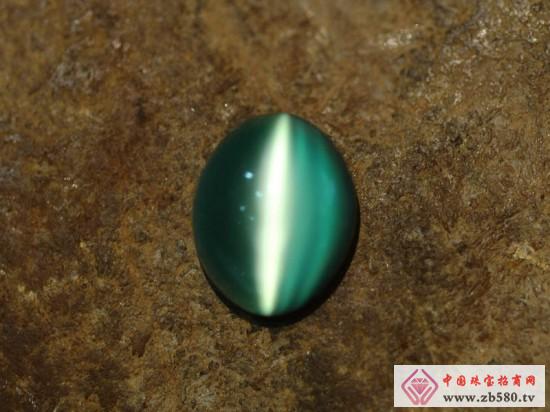The identification of cat's eye gemstones is mainly from the aspects of refractive index, density, hardness, inclusions and other characteristics. Most cat's eye gemstones are gray-brown and translucent, and the opal stones with similar refractive indices are also more. The cat's eye gemstones are all cut into a curved surface. The refractive index itself is only an approximation. If the gemstone is inlaid, its density cannot be directly measured, which makes it difficult to accurately distinguish different cat eye gemstones.

Among the common cat's eye varieties, gold emerald cat's eye, quartz cat's eye, glass cat's eye, wood stone cat's eye, moonstone cat's eye, etc. are easier to identify. The refractive index of the gold emerald cat's eye is the largest among the common cat's eye varieties. It is also the largest. When there is a certain size, a clear 444 nm absorption line is visible, which is the most precious cat's eye gem. Diopside cat's eye, striated stone cat's eye, stubborn pyroxene cat's eye, apatite cat's eye, etc. are difficult to distinguish because of several major physical parameters, but their phenomenon under polarizer is different; The cat's eye can appear four bright and four dark under the orthogonal polarizer, because the cat's eye effect of the sillimanite is produced by the parallel arrangement of fibrous sillimanite minerals (non-homogeneous bodies), while the other ones are due to their internal contents. The effect of the inclusions on light is generated; the 505 nm absorption line is the diagnostic line of the stubborn pyroxene cat's eye, and the typical absorption line of the apatite is the rare earth line. In summary, the identification and identification of each gemstone is carried out in a number of ways, and it is not possible to draw conclusions based on a certain parameter or property, even if this parameter is deterministic.
Opal is one of the important variants of the gold emerald mineral family. The hardness is 8.5 degrees, second only to diamonds and red and sapphire. Its color is mostly yellow, yellow brown, yellow green, green white, coffee and other colors. It is obviously golden with color, and its Chinese name is also obtained. A good opal, the bright line of the cat's eye is located in the center of the gemstone face, narrow and clear, and the light is visible. Opal is very precious due to its special light effect, and high-quality opal above 10 carats can be worth millions of dollars. The method for identifying the true and false of the opal is as follows:
1. The main recognition feature of opal is the clear brown-eyed cat's eye. The filamentous inclusions of the opal are rutile, and some are empty tubes. Because these tubular bodies are slender and dense, the cat's eye effect is particularly noticeable, and is also very clear under weaker sources. This is unmatched by other gems.
2. Use a single light source to illuminate the side of the opal, the color of the sides of the opal is different. When you look at the yellow opal from the left side, the left side is honey yellow, the right side is milky white, and when it is illuminated from the right side, its color is just the opposite.
3. Artificial opal is made of fiberglass, red, blue and brown, and the brown-yellow variety is somewhat like natural opal. The difference between the two is that the artificial opal has 2-3 bright bands at the top of the curved shape, and only one natural opal; the sides of the artificial opal are observed with a magnifying glass, and the hexagonal honeycomb structure can be seen; Stone has a lower hardness than natural opal.
Recycled Fabric,Recycled Oxford Fabric,Recycled Satin Peach Skin,Recycled Satin Weave Fabric
WEIHUA TEXTILE , https://www.weihuatex.com